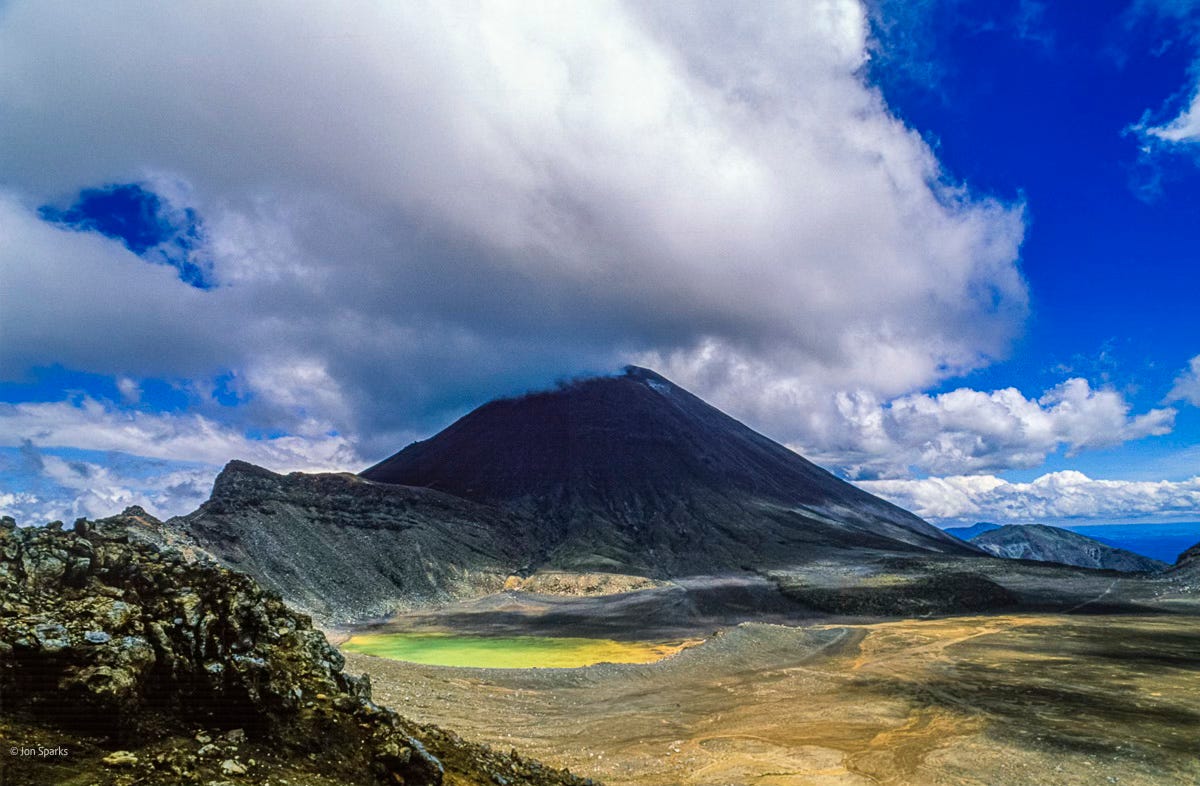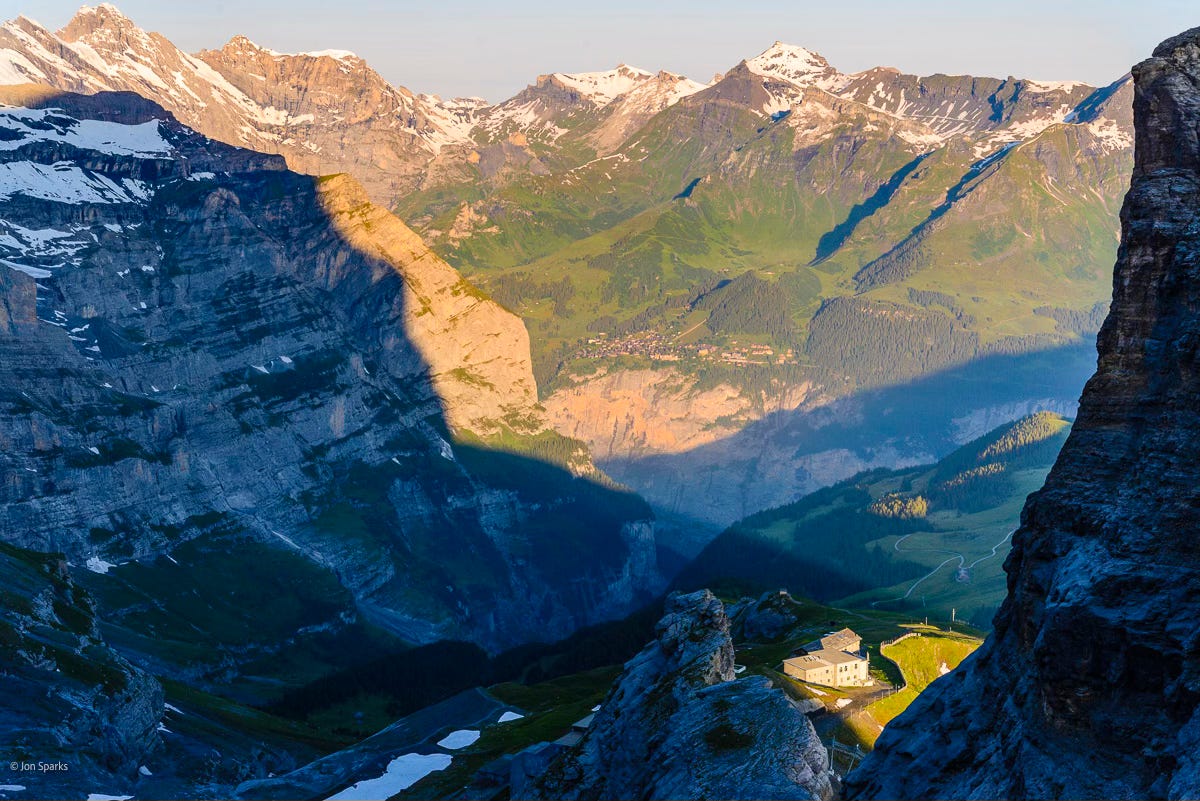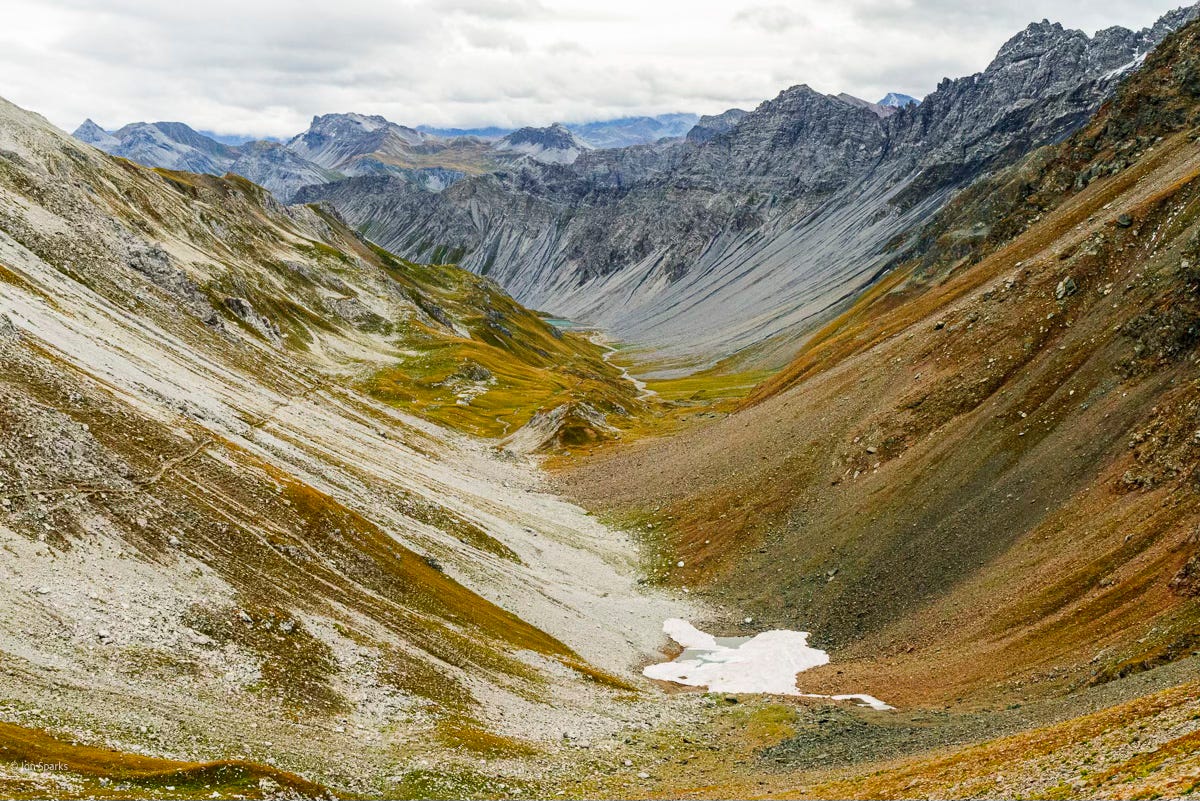This post was first prompted after seeing a Note by Simon K Jones, which likened world-building to an iceberg: the portion above the surface is all the reader sees, but the suggestion is that they also feel all the rest. I’ve seen similar ideas suggested before, but often the point being made is a different (but related one) that the writer needs to know more about their world and how it works than they actually reveal to the reader.
The point I made in a comment is that world-building is mostly discussed in the context of SFF, and it’s also of obvious importance in historical fiction. However, in my view, all good fiction depends on it, and this absolutely applies to contemporary realistic fiction1. Whether a novel is set in Edinburgh (Ian Rankin) or the Alaskan Bush (Dana Stabenow), the setting is a vital element and an awful lot depends on the author’s ability to capture and communicate it.
Of course you might say that Stabenow’s Alaska and Rankin’s Edinburgh exist in real life. In Edinburgh’s case, I’ve seen some of it myself. An interactive map on Rankin’s website guides you to the street where John Rebus lives, the Oxford Bar, and over a dozen other locations. One, Fleshmarket Close, gives its name to the fifteenth Rebus novel.
In a case like this, you might say that Rankin isn’t 'building' Rebus’s world but, rather, selecting elements from the real world to form the setting in which Rebus, Siobhan Clarke, and the rest play out the stories. Strictly speaking, I suppose this is true, but I’d argue it misses the point. Let’s consider my other example, Alaska as seen in the novels of Dana Stabenow.
I’m guessing fewer of you are familiar with these than with Rankin, so let me digress for a few lines to give them a plug. If you like detective stories that aren’t too gory or noir-ish, with intriguing characters and a well-drawn setting—if you like, say, Rebus, or Jackson Brodie, or V I Warshawski2—then there’s a good chance you’ll enjoy Kate Shugak, the central character of Stabenow’s main series.
The Shugak books have extra appeal, for me, in being set somewhere far outwith my experience. Rebus’s Edinburgh, Jackson Brodie’s Cambridge or Yorkshire or Edinburgh (again); I’ve been to these places and recognise much about them. Even Warshawski’s Chicago, though I’ve never been there, has a kind of familiarity from films and TV3.
Obviously, in cases like these, world-building is a different proposition. Contemporary writers like Rankin and Stabenow are depicting real places that they know intimately. Historical fiction writers face a different challenge, as they cannot experience their setting as it was at the time in question… but they can still know a great deal about it. Consider Wolf Hall and its sequels, which must rank among the greatest historical novels of our times. Many of the locations still exist, and there is copious documentation about the lives of Henry VIII, Thomas Cromwell, and the other main characters. Hilary Mantel had abundant source material to draw on, and we know she went into it deeply. (Which takes us back to the iceberg metaphor.)
Still, there must have been a point at which her imagination came into play. And she must have made many decisions about how to bring place and people to life in the imaginations of readers who didn’t have such deep knowledge of the time. This, too, is surely an aspect of world-building; and my central point—if I have one—is that this is where all varieties of world-building, whatever the genre, come together. Probably every reader visualises Cromwell’s world slightly differently, just as someone who’s never been to Edinburgh builds their own picture of Rebus’s. It becomes an exercise in co-creation between author and reader (and that’s the magic of books).
It’s different again in science fiction and fantasy—isn’t it? Well, yes, but maybe not as categorically different as you might first imagine. Consider, for example, Tolkien’s Middle-earth, undoubtedly of seminal importance in the development of fantasy literature—even if we don’t fully agree with Terry Pratchett’s view that “Most modern fantasy just rearranges the furniture in Tolkien’s attic.”4

First, by the way, let’s be clear that the roots of Tolkien’s Middle-earth are in no way to be found in New Zealand. I make this point because I’ve encountered generally well-read people who apparently imagined that he was a Kiwi. For the record, Tolkien was born in South Africa but moved to England aged three. He never visited New Zealand5. Kudos to the New Zealand tourist industry for making the most of its use in the shooting of Peter Jackson’s films; but it’s a wonderful country and there are copious other reasons to visit.
There’s no doubt that Tolkien’s Shire is principally drawn from the landscape around his boyhood home of Sarehole, now part of the West Midlands conurbation, with some details possibly derived from the Ribble Valley in Lancashire. Other places similarly have roots in the real world: Rivendell has much in common with Lauterbrunnen, for example. But I’ve already written6 more extensively about this, and his biographers and others have explored the connections exhaustively. It’s commonplace to see The Lord of The Rings, which both begins and ends in The Shire, as fuelled by nostalgia for a rural England which, in the area around Sarehole, literally vanished before his eyes as he grew up, coupled with rage or despair at the seemingly unstoppable march of modernity. This highly plausible reading links Mordor to the heavily industrialised Black Country, while Saruman’s orcs tear up trees to feed the forges of Isengard. (Tolkien’s love of trees is well documented.)

But Tolkien’s world is not explicable solely in these terms. He was also entranced, from an early age, with language and folklore, and one of his stated aims was to create a specifically English legendarium, comparable to works like the Kalevala, which played a crucial role in forging Finnish national identity at a time when Finland was still under Russian rule, having previously been a province of Sweden.
Many works of fantasy specifically place themselves in settings that are inspired by or even map precisely onto our world. Another author of intrinsically English fantasy, Alan Garner, set several of his stories in North-East Cheshire (close to my birthplace7, as it happens). The Weirdstone of Brisingamen, his first novel, plays out in the area between Alderley Edge and the prominent hill of Shutlingsloe, a distance of less than ten miles as the crow flies. Philip Pullman’s His Dark Materials series uses a 'modified' Oxford, as does the prequel La Belle Sauvage; so does R F Kuang’s excellent Babel8.
And that’s even before we consider contemporary or urban fantasy—of which I know none better than Ben Aaronovitch’s Rivers of London series, in which a few invented places are slotted into a recognisably real city. The Folly, for example, home of the magical wing of the Metropolitan Police, is on Russell Square.
That’s fantasy; what about science fiction? I hear you cry (or maybe not). Well, of course, there are plenty of examples of SF novels set in authentic places, going back to the seminal The War of the Worlds. Disruption of our known world is a major theme in SF, including the 'alternative history' sub-genre, of which Philip K Dick’s The Man in the High Castle is a famous example. Then there are rafts of books set in fairly near futures, on Earth or in our own Solar System. Kim Stanley Robinson’s magnificent Mars trilogy is based on (I’d wager) as much research as Wolf Hall—including a sojourn in Antarctica.
But, equally, there are many SF (and fantasy) novels which take us to far-distant worlds and conjectured futures (or past, as in 'long, long ago, in a galaxy far, far away'). In some cases the protagonists aren’t even human, or humans find themselves co-existing with other species. Even in the original 1960s series of Star Trek the crew isn’t wholly composed of humans; Spock is half-Vulcan. In later series we see other aliens (albeit all more or less humanoid) as full crew-members; in fact the character who’s been in most episodes across all series is the Klingon, Worf, a regular in The Next Generation, Deep Space Nine and Picard.
For film and TV it’s always been handy to make most of your characters approximately humanoid in form, as you can then use human actors. This includes robots like C-3PO, played by Anthony Daniels. And this is often a way of exploring particular aspects of humanity, like the Vulcan focus on logic; but the same is true of many stories where other species are far from human in form. The Dwellers in Iain M Banks’s The Algebraist may inhabit the cloud-layers of a gas-giant planet, and live for millions of years, but in thought and action they show many human traits, albeit eccentric ones. The 'Minds’, benign machine intelligences which are the true leaders of The Culture in Banks’s series of novels, may be vastly quicker and smarter than humans, but we can still recognise and relate to their thought processes.
At this point, you might think I’ve strayed from world-building into character-creation, but I’d argue that they overlap, and never more so than in fantasy and SF. Is my fantasy world going to have dragons in it? Or, indeed, is my science-fictional world going to? (Anne McCaffrey’s Dragonriders of Pern series can be read as either SF or F.) Are humans going to be called on to interact with non-human species, as in Becky Chambers’s Wayfarers books9? These are pretty basic questions, and they underline that character and setting aren’t two separate boxes that we can fill in at different times.

I’m well aware that this post is stretching past my preferred sweet-spot of 1200-1500 words, and I’m a long way from having encapsulated all my thoughts about world-building. I’m not even sure that it’s going to happen in two posts. We’ll see. Part Two is now online, focusing much more on the creation—or emergence—of the world of my own series, The Shattered Moon. I hope it will then become clear why I say 'emergence' as opposed to 'creation'—and why I don’t think I’m alone in working this way.
"Now, with Tolkien, that history and geography already existed in his writings before The Lord of the Rings. But in my fantasies, I have often mentioned events or places which I didn’t yet know anything about.”
Ursula K Le Guin.
I could also argue that all good fiction needs to be realistic—for some value of 'realistic'.
I’m a bit disconcerted to find that this introduction to V I on Sara Paretsky’s website opens with an astrological reference. I’m pretty sure V I herself never mentions any such… well, I’ll draw a veil over what I really think of astrology.
I don’t recommend the eponymous movie. My memory is that Kathleen Turner was miscast and played VI as a vampy siren, which really isn’t right. But it’s a long time since I saw it.
In brief, a situation which is slowly changing, but it’s taken fantasy authors—or at least, English-language publishers—a long time to break free.
In fact I’m almost certain (from multiple reads of biographies and profiles) that he never again travelled outside Europe, and I suspect never got on a plane in his life.
Wherein I said 'All fantasy needs a healthy dose of realism to make it convincing.'
Macclesfield.
For some reason, Oxford seems to have generated significantly more fiction of note than Cambridge… anyone have any thoughts or explanations for this?
I’m planning a post specifically about this series soon; I’m currently part-way through Book 4 on a series re-read.




Jon- Lauterbrunnen is definitely one of those heaven on earth type of places that I should love to visit again. But your reference to Sarehole really makes me think about a possible visit there. Thanks for this-
Hey man, this was interesting. I have been thinking about the particular enjoyment effective world building gives us as readers a lot recently.
Creating alternative worlds isn’t part of what emerges (and I really dig your distinction between creation and emergence: the former feeling somewhat too omnipotent for me, while the latter feels what it feels like when one writes) for me when I write; it is, rather, thinking about the world in which I exist (maybe that should be worlds because life is all a bit Venn in its way) and trying to both understand it and show it.
But, when I read (and I don’t think one can really disentangle the reading self from the writing self) I love a well thought through, cohesive alternative world. I guess, for me, Pullman would be my go-to in fantasy (and, I own, fantasy isn’t really my party).
Have you read Hanya Yanagihara’s To Paradise? She beasts the whole alternative world scene - particularly in the New York sections of the book. Really inventive and, in her depiction of an alternative queer societal norm, with a real beauty.
In fact, it was so interesting I subscribed (I only do free…if I ever decide to put up a fee for my Stack I might start paying subscriptions), thereby adding to my TBR list…